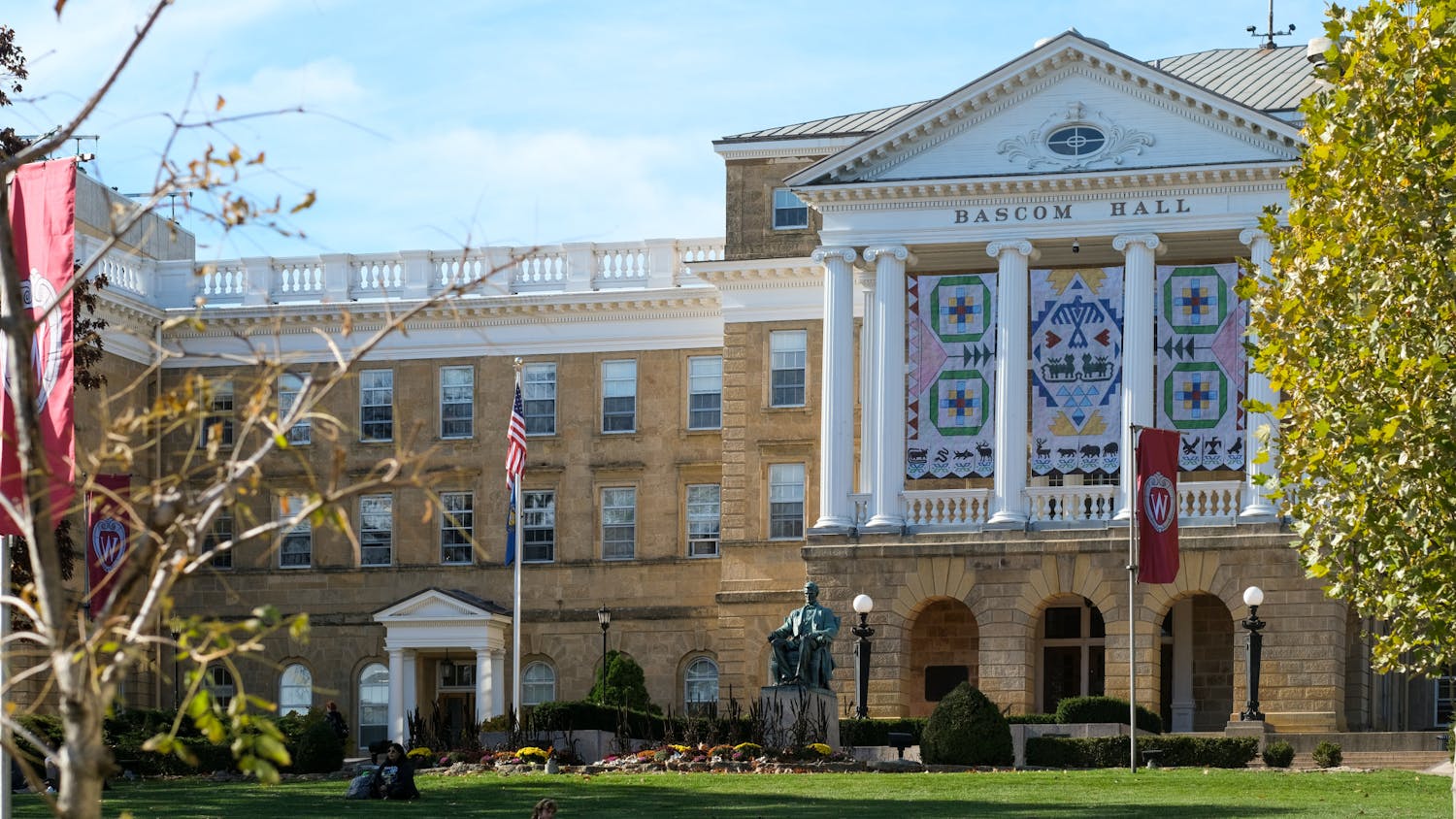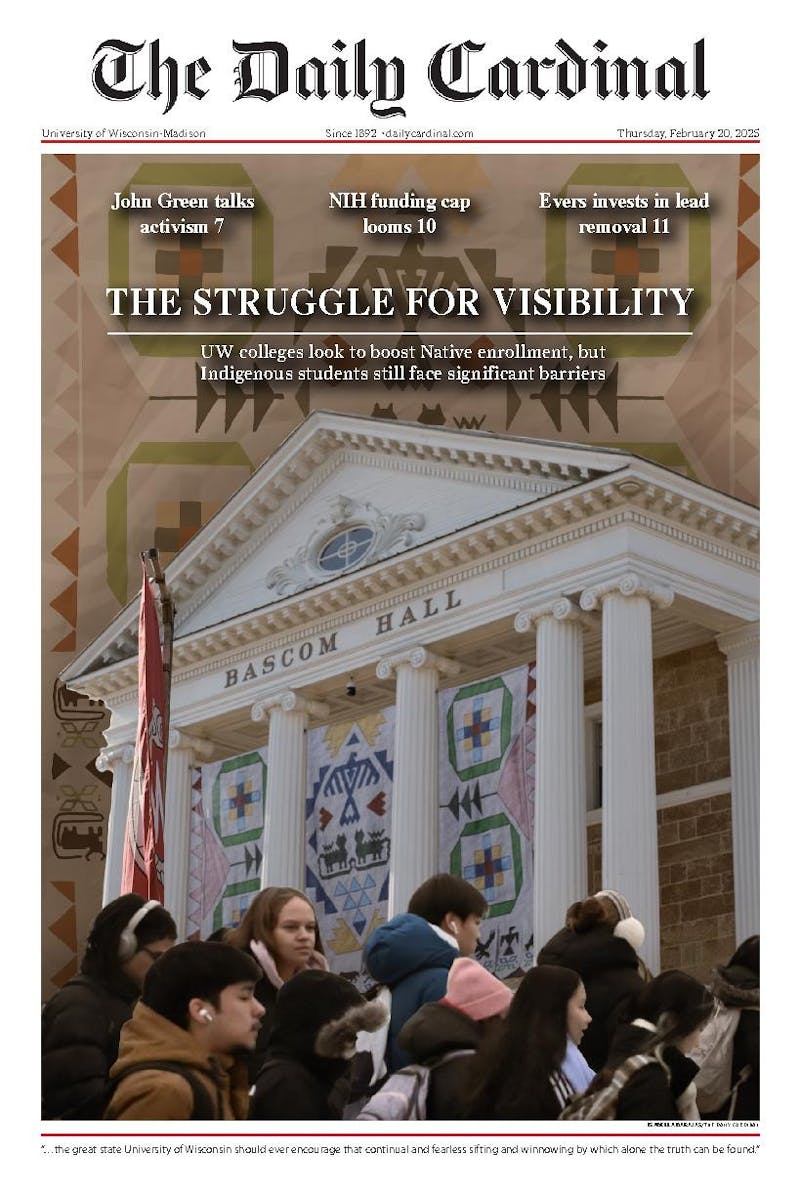The room was almost silent, completely absent of all sounds typical of a university classroom setting. There were no backpack zippers. No dropping lecture trays. No papers shuffling. Instead the instructor's sole voice at the front of the room was heard over the heavy exhaling of her 10 students dressed in leotards, tights and tank tops.
While the rest of the ballet class caught their breath, one student was singled out to perform. She outstretched both arms, lifted one leg parallel to the floor and began a slow turn. The placement of her leg and shaking body made the movement look impossible, but she kept her balance and continued to turn. However, it was still imperfect to the instructor who took her student's outstretched leg and lifted it even higher—that's where her leg needed to be. But this may be expected from the first university to offer a dance degree in the country.
UW dance majors spend a large majority of their time in Lathrop Hall, making use of the studios to perfect dance techniques or choreograph their own.
""We've thought about camping in here,"" UW-Madison senior and dance major Heidi Adams said. While other students finish their homework at any number of libraries or at home, dancers usually need a studio and are allowed to stay beyond normal building hours with special permission.
The work outside of class is also somewhat atypical. Homework may include choreographing routines using only certain body parts or perfecting individual technique. However, dancers are also required to write two papers for each dance class. Other classes may also assign reflective papers and reading assignments.
According to The U.S. Department of Labor website, ""Dancers and choreographers face intense competition for jobs. Only the most talented find regular employment.""
""To a certain extent, they might also need to get a second job to support their life,"" Jin-Wen Yu, the chair of the program said, adding it is not easy just to be a dancer.
However, the majority of UW-Madison dancers pursue a Bachelor of Science Degree, which is more flexible than the Bachelor of Fine Arts. The B.S. allows more employment opportunities in fields closely related to dance as well as preparing them for stage performance. They may go on to pursue work in dance therapy and education, as well as other fields. The B.F.A. however, is more specifically for stage performance.
Lauren Rosenstein, a senior in the program pursuing a B.S., is aware of the competitive and limited job market after graduation and is double majoring in communication arts to further secure her future.
""My parents have always been supportive of my dancing but more in terms of as a hobby,"" Rosenstein said. ""They are just concerned for my financial stability and security which is why I took another major. If I get hurt, I have other options.""
Adams, on the other hand, is not worrying too much because she is ""not trying to make it big,"" and also plans to supplement her degree by getting a master's of Business Administration and would like to manage her own dance company or facility.
Other students believe their hard work will carry them through.
""I basically feel that if you really want something and if you are willing to work hard, then you will achieve your goal,"" junior Nicole Roerick said, following the B.F.A. track. She also plans to continue her dance education at the graduate level.
Student evaluations occur during sophomore and junior year when they are critiqued by a committee of the head faculty and advised on whether they should continue in the program or not.
""So if they are not there or we know that through their commitment or through their progress they didn't reach that level, we give them feedback and say, maybe this is not a good choice for you,"" Yu said. ""It's still on the student. We did not say, you cannot continue.""
Yu believes the program is leading the way in terms of faculty and facilities, but is still working to strengthen its other weaknesses, such as its small student body. According to Yu, the students at other universities may be better because their enrollment is larger and inevitably the competition and the capabilities of the dancers will also be better. For the first time this year, the program implemented auditions for admittance. Previously, students were only required to fulfill prerequisites. Auditions and more recruitments will work to bring more qualified students into the program.
As a small program, the dancers know each other well and become very close.
""The small size of this major allows there to be a lot of intimate working situations which fosters a lot of friendships,"" junior Emily Miller said.
However, its small size may also make it difficult for the rest of campus to understand.
""People always think we have an easy time,"" Adams said. ""Everything I do makes me sore.""
Adams also explained dance classes are longer than typical lectures and require mental and physical alertness the entire time. Long days are spent doing rigorous physical activity. Then dancers come home late to finish homework for their other classes after they are already physically drained.
Back in the classroom the dancers were still practicing. Every limb had an exact placement, even the fingers extending from arms were positioned definitively. As they continued to move, the arms extended above the heads but never reached. The fingers were receptive and open, and as the arms moved the face followed, never compromising the space between them. It was graceful and effortless.
""There are really too many reasons why I love dance and it all comes down to how it makes me feel, and that is indescribable,"" Roerick said. ""The body may be able to express something that words simply cannot.""





